News
An Atlantic Adventure: Brazilian Film Series in Perspective
24.01.2021
As part of its public engagement strategy the Cluster of Excellence created the event series "AfriKaleidoskop" in 2020 showing films on topics of the African diaspora. In 2021, the series was enriched by a number of screenings of movies originating in Brazil. Organised by former Cluster fellow Jonas do Nascimento the subseries invited five filmmakers to show and discuss their work.
Report by Jonas do Nascimento
In 2021, as part of the subproject "Brazilian (Black) Memories: Renegotiating the Past in the Country of the Future", integrated into the Black Atlantic Revisited project, headed by Prof. Ute Fendler, I had the pleasure of promoting an Afro-Brazilian Film Exhibition within the Cluster of Excellence – Africa Multiple, and it was a vibrant opportunity to debate with a new generation of Brazilian filmmakers. During this period, it was possible to navigate an ocean of multiple colours, voices, cries of pain, desires, dreams, and visions of a new future for the black people in the south Atlantic. In Brazil, as is well known, the myth of "racial democracy" has been spread for many years. Even today, it is noted in the official discourse that a generally condescending tone with the idea of harmony between the races makes this tropical land, as the Austrian writer Stefan Zweig popularised, an illusory "Country of the Future".
However, our future is only possible when we reconcile it with our past and the memory of slavery – the original sin of the Brazilian nation. Because the past is so impressively present today, in our political, legal, and social structures, denying a different future for each of us. To get an idea, although Brazil has an "African soul" (the largest black population outside Africa), only in 2003 the mandatory teaching of "African History" and "Afro-Brazilian Culture" in schools and universities was promulgated by former president Luiz Inacio Lula da Silva. In other words, there is here a mismatch between "dreamed Brazil", "propagandised Brazil" – in its symbols and myths – and "real Brazil."
In his classic book, "A Integração do Negro na Sociedade de Classes" [The Integration of Blacks into Class Society], the sociologist Florestan Fernandes has already shown that slavery as a social institution annihilated the enslaved people, as it denied their humankind, culture, their family, in short, gave them "no alternative." As a result, it prevented the integration of black people into modern society, and it would have led them to forced social anomie and social marginality in the Brazilian context.
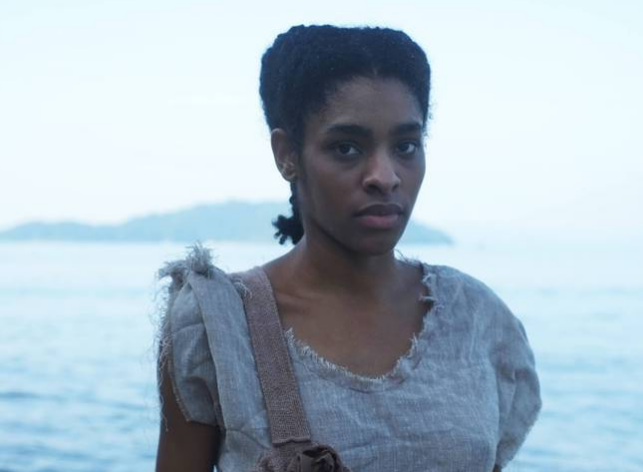
“Novo Mundo” (2020) by Natara Ney
Nevertheless, what did the enslaved groups and newly free individuals think? How did they live? What values did they share? What projects for the future did they have? How was this memory preserved and passed forward? Can Brazilian cinema offer insights into the construction of memory and rewritings of slavery and African heritage in Brazilian national iconography? How? To what extent do their narratives/images approach (or not) the traditional ideas of Brazilian national identity? What concepts, trends, notions, and pre-notions guide their practices? In other words, how has Brazilian cinema reworked and re-imaged all this? These questions motivated the initiative to promote a film exhibition and face-to-face with the directors to understand, rethink, and interrogate Brazilian history, especially its "subterranean" black memories.
In this space, we screened and debated films such as “Novo Mundo” [New World] (2020) by Natara Ney, “Tudo Que é Apertado, Rasga” [Pressed, It Will Be Burst] by Fabio Rodrigues, “Raízes” [Roots] by Simone Nascimento, “Egum” by Yuri Costa, and “Chico Rei entre Nós" [Chico Rei Among Us] by Joyce Prado. All of them are examples of attempts to rescue and reflect on the historical memory of slavery experience and African culture in Brazil and the absence of black characters in the iconography and Brazilian collective memory.
In our first session, we had the opportunity to watch two films: "Novo Mundo" and "Tudo Que é Apertado, Rasga". Natara Ney's film presents a variety of poetic and metaphorical images about the beauty of the tropical land and the brutal violence that constituted the social formation of the new world. Narrated in voice-over by the renowned black actress Zezé Motta, and with the talented performance of Mohana Uchoa, in the very first words, the narrator reveals to us her purpose:
I've crossed the ocean in the dark hold of a vessel where I took refuge. I didn't even know where I was heading. When we do need to run away, uncertainty is hope itself. From up there in the deck, they try to control our will. But from down here, by looking through those openings, I will reveal that history.
Therefore, in an intimate and sensory journey, "Novo Mundo" offers a reflection on the silencing and invisibility of enslaved peoples' culture, history, and memory. Even living in the shadows and at the margins of society, their voice, although suffocated, is not silenced. Thus, by claiming the "right to memory", the film proposes a struggle for a new space of "reexistence". In doing so, the aesthetic language becomes an exercise of resistance in the face of the violence of a single, monochromatic history. Consequently, annihilated bodies return like spectres turning the past into a field of dispute for historical reparation and cultural survival.
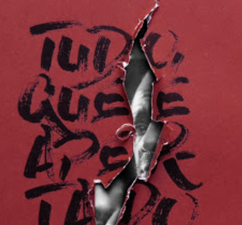
”Tudo que é apertado, rasga” (2019) by Fábio Rodrigues
Therefore, in an intimate and sensory journey, "Novo Mundo" offers a reflection on the silencing and invisibility of enslaved peoples' culture, history, and memory. Even living in the shadows and at the margins of society, their voice, although suffocated, is not silenced. Thus, by claiming the "right to memory", the film proposes a struggle for a new space of "reexistence". In doing so, the aesthetic language becomes an exercise of resistance in the face of the violence of a single, monochromatic history. Consequently, annihilated bodies return like spectres turning the past into a field of dispute for historical reparation and cultural survival.
To forge a device capable of operating this search for historical justice, "Tudo Que é Apertado, Rasga" (2019), by Fábio Rodrigues, intervenes in an archive of images re-studying part of the national cinematography in the light of the presence and agency of the black actor and actress. In a kind of "meta-theory" about cinema itself, the film constantly struggles to rescue the dignity of black characters in Brazilian cinema. As the film's opening reveals, with Gilberto Gil's song, "the happiness of the Black people, is a combatant one". So, if pressed, it will be burst, showing what one wants to deny, silence, or make invisible. Despite stereotyped roles and the rejection of the afro-Brazilians as characters and interpreters, and their own lives, the film sets out to run against this storm, represented by the abyss of insensibility. If, on the one hand, the film denounces the lack of freedom of the black body in national cinema, with emotional speeches by Grande Otelo and Zezé Motta, on the other hand, it also shows the power of these beings to preserve their existence, despite the mechanisms of what Abdias do Nascimento would call it "denial of Brazilian cultural truth". Therefore, Rodrigues seeks, among the gaps and crevices in the Brazilian visual archive, to find this truth.
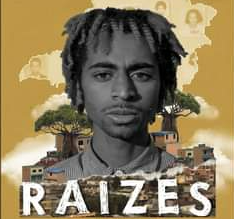
"Raizes" (2020) by Simone Nascimento
In the second session, we also had the opportunity to watch and debate the film "Raizes" (2020) by Simone Nascimento. Based on the questions asked by Simone, who lives in São Paulo – the largest city in Latin America – about the lack of knowledge of her origins, the film aims to settle accounts with Brazilian history. After abolishing slavery, the Brazilian national State adopted a eugenics policy of whitening the nation by importing European labours, predominantly Italian, German, Portuguese, Spanish, and Polish immigrants – mainly for the coffee plantations in São Paulo. With them came families with their surnames which is maintained and valued until today. However, with the burning of slavery trade records, Brazilian society imposed a denial of history and memory on a portion of its population, to which the main character of the film, Kelton, belongs. "Raízes", therefore, appears at a time of great reflection on black identity and the rescue of ancestry. However, we realise that this incessant search by Kelton for his family genealogy is an inglorious effort because it always ends up bumping into the bureaucratic impossibility of going beyond the register of his grandparents. Although this is Kelton's search, he represents a collective searching and a collective search for a past unknown and institutionally denied. In this story, the film denounces a facet of Brazilian society that insists on masking the damage caused by slavery even today, denying fundamental rights such as the right to memory and making it difficult to build a prosperous future for its population. In other words, only by recognising their "roots" the black population and the Brazilian nation will one day reach a path of greater equality and justice.
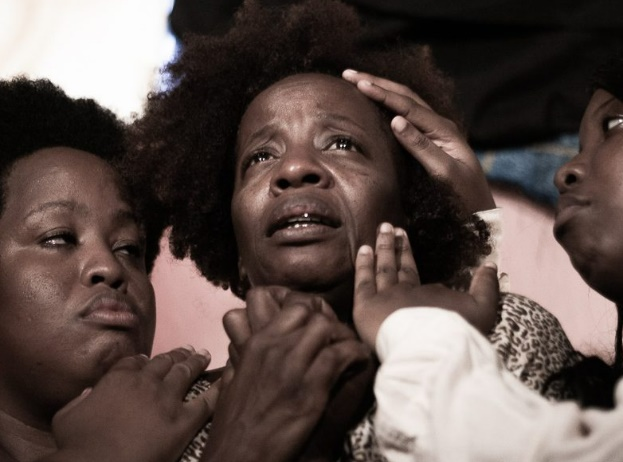
"Egum" (2020) by Yuri Costa
In the fourth session, we enjoyed watching and debating the film "Egum" (2020) by Yuri Costa. Costa is a talented young filmmaker from Rio de Janeiro who brings an innovative proposal to the racial debate – inspired by surrealist aesthetics and horror films, something not very common when discussing slavery and racial relations in the Brazilian cinematographic field. "Egum", in Yoruba mythology, designates the soul or spirit of any deceased person. The trauma of slavery, in Costa's film, becomes thus a scary experience, as the spirits of the dead cannot leave those who remain here, beside us.
Thus, allegorically and through the horror genre, the film seeks to dialogue with the traumatic memory of slavery. At all times, one can see this feature of the scene that recalls and recreates this moment of trauma and brutal violence against a black family. However, this trauma presents itself through the manifestation of spirits, the so-called eguns. We have Jonas, the murdered brother, and Eduarda, the sister whom her father sells to a white woman and man. So, the film brings back to the public this discussion of power over black bodies, either through physical violence and commodification or through the victim discourse, because when the white people in the film try to refer to the character of the black journalist, they treat him as that poor guy who managed to become a writer, to have a university education. In this aspect, the film highlights the echoes of slavery experience to speak about contemporary Brazil.
Again, there is a call to acknowledge the wounds of the past so that our ancestors can finally rest in peace. Only in this way will we be able to be at peace with the present and think about building a different future.
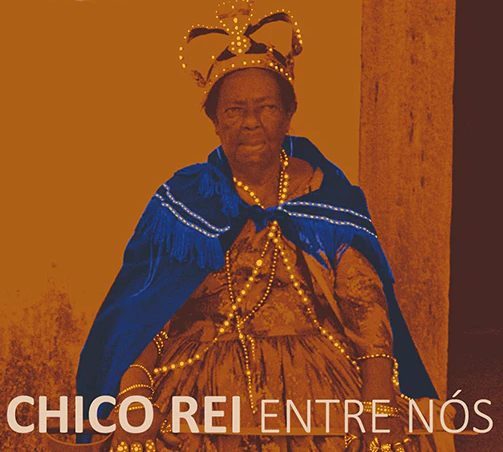
"Chico Rei entre Nós" (2020) by Joyce Prado
Finally, in our last session, we had the opportunity to watch and debate the film "Chico Rei Entre Nós", by Joyce Prado. Prado is a young but experienced filmmaker who sought to excavate the memory of a legendary character in Brazilian history: Chico Rei – a Congolese monarch who was enslaved in Brazil and forced to work in the gold mines in the province of Minas Gerais in the 17th century. An important point here is that her intention was not just to reread history but, above all, as Walter Benjamin claimed, read history against the grain. The film, therefore, investigates the legacy of Chico Rei and the echoes of slavery in contemporary Brazilian society, respecting a source of knowledge that is often discarded by official records: the oral tradition. In doing so, she does not propose to look for formal evidence to prove the existence of Chico Rei. Based on the understanding that the official record essentially tells the history told by the coloniser, Prado wants to offer a new perspective, or a counter-narrative. Because while the others (European colonisers) came with their families and traditions, for the black people, "they took away our family, our culture. We only had our body.", said one of its characters.
Others told us, "Ouro Preto was not just a baroque pearl outside Europe, Ouro Preto was an African machine for extracting gold". Six hundred fifty tons of gold were extracted from the region during the 17th century – not to mention smuggling, with an estimated 300 tons of gold. This exorbitant amount of gold financed the modern world and the great historical revolutions, such as the industrial. Besides that, in 1821, 9% of the population owned 91% of the country's wealth, and in 2017, 8% of the population owned 92% of the wealth. In other words, in 200 years, the concentration of wealth has not only not changed, but it has also even increased in Brazil.
These films showed us a complex cinematographic panorama, full of nuances and different languages. However, they also told us that although a contradictory and highly unequal society, Brazil has also witnessed the emergence of different and multiple voices that confront the current political and social order by proposing a historical review and challenging the official memory. In sociological terms, we can affirm that these filmmakers represent a new structure of feeling, whose creative power seeks to save the future by revising the past.
Dr. Jonas do Nascimento
Postdoc/Fritz Thyssen Stiftung
Former Fellow/Africa Multiple Cluster

